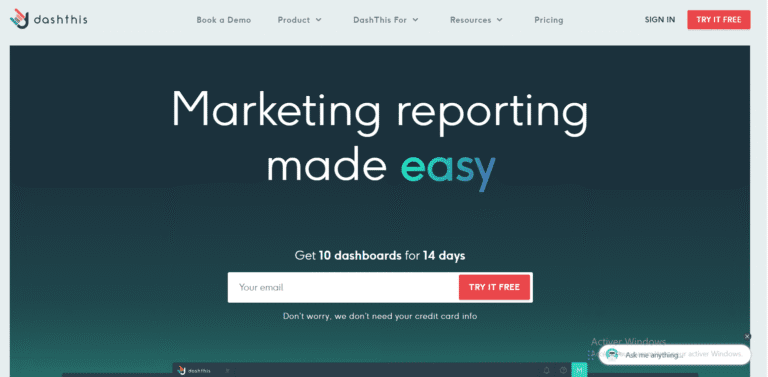If you’ve ever felt overwhelmed by the complexities of tracking employee attendance, you’re not alone. Managing absenteeism effectively demands precision and accessibility in how data is organized and interpreted. Fortunately, mastering the creation of an Absenteeism Dashboard Excel can transform your approach. This guide is meticulously designed to reduce your frustrations, offering straightforward insights and methods on how to create an Absence Dashboard in Excel that not only tracks, but also analyses attendance patterns with ease.
This comprehensive introduction to Excel Dashboard Templates for Absence Monitoring supplies you with necessary tools and knowledge from the fundamentals to advanced techniques. You’ll learn through detailed Excel Absenteeism Dashboard Guide and Excel Dashboard Examples for Absenteeism, augmented by practical Tips for Monitoring Absence in Excel. Whether you’re aiming to streamline your existing processes or build a new Build Absence Reporting Dashboard Excel from scratch, this article will pave the way to a more organized and informed decision-making process in your organization.
Understanding Absence Absenteeism Monitoring Dashboard
An Absenteeism Dashboard Excel is a powerful tool used in businesses to track and analyze the absence patterns of employees. Utilizing an Excel dashboard allows for comprehensive monitoring and reporting, facilitating informed management decisions aimed at reducing absenteeism and enhancing productivity. In today’s data-driven environment, absence monitoring is crucial for maintaining workforce effectiveness and operational efficiency.
Before creating an absence monitoring dashboard in Excel, it’s essential to understand its core functions and components. The dashboard serves not only as a tool for recording absenteeism but also as an analytical platform that makes use of Excel Dashboard Templates for Absence Monitoring to highlight trends, issues, and opportunities. Moreover, the visual aspects of Excel dashboards make the data accessible and understandable to all levels of management, promoting a proactive approach to workforce management.
1- Key Components of Absence Absenteeism Monitoring Dashboard
Effective Absence Absenteeism Monitoring Dashboards include several key components, such as individual employee attendance records, absence frequencies, types of absences, and departmental absence rates. Advanced dashboards may also integrate forecasting models to predict future absenteeism rates based on historical data. Customizable alerts and notifications can be set up to flag excessive absenteeism, helping managers to take timely corrective actions.
2- Types of Absence Absenteeism Monitoring Dashboard
There are varied structures of dashboards depending on the specific needs of a business. For instance, a basic Employee Absence Tracker Excel Template might suffice for small teams, while larger organizations could require more detailed analytics such as departmental comparisons or linkage to productivity data. Some companies might opt for dashboards that incorporate Excel Dashboard Examples for Absenteeism with benchmarks against industry standards to evaluate their standings. Understanding these variations can significantly impact the effectiveness of absence management strategies.
The initial design and integration of a dashboard require a practical understanding of How to Create an Absence Dashboard in Excel. Through detailed Excel Absenteeism Dashboard Guide and Tips for Monitoring Absence in Excel, organizations can tailor their monitoring systems to meet specific administrative and strategic needs, ultimately leading to a more engaged and optimized workforce.
DashThis: Marketing Reports Made Simple
Automated and easy-to-use marketing reporting tool to save hours of work and create impactful reports.
Key Features
- Automated and customizable dashboards
- Integrations with 80+ platforms
- Pre-built templates for different reports
- White-label reports
- Automated sharing and scheduling
- AI Insights for smart analytics
* This is an affiliate link. If you make a purchase through this link, I may receive a commission at no extra cost to you.
Professional Alternatives to Excel for Absence and Absenteeism Monitoring Dashboard
Tableau for Advanced Data Visualizations
One of the more robust alternatives to Excel for creating an Absenteeism Dashboard is Tableau. Unlike Excel, Tableau specializes in turning complex datasets into visually appealing and interactive dashboards. This tool offers real-time data updates, which is a significant advantage for managing absenteeism where timely data is crucial. The ability to automatically pull data from various sources and integrate it into an easy-to-understand format means that HR professionals can quickly grasp patterns and anomalies in employee attendance.
Moreover, Tableau allows users to create more dynamic visual elements. For example, instead of static charts, users can interact with the data, drill down for more granular insights, or adjust the dashboard view to focus on specific departments or timeframes. This flexibility enhances the decision-making process, making Tableau a powerful tool for Absence Monitoring.
Power BI for Comprehensive Integration
Microsoft Power BI is another leading competitor when considering an upgrade from Excel Dashboards for Absence Monitoring. Power BI interfaces seamlessly with other Microsoft applications, including Office 365, making it a convenient choice for organizations already embedded in the Microsoft ecosystem. Its data processing capabilities surpass Excel, handling larger datasets without performance lags, which is pivotal in dynamically updating the Absence Absenteeism Dashboard.
The key advantage Power BI has over Excel is its integration capabilities and advanced analytics engine. Users can create complex, data-driven models that forecast trends in absenteeism, leveraging AI to provide predictive insights. This can tremendously aid HR departments in proactive absence management strategies.
Zoho Analytics for User-Friendly Automation
Zoho Analytics presents a user-friendly and scalable alternative tailored for creating effective Absence Dashboards. It stands out due to its automation features, where users can schedule data imports and reports generation, reducing the manual workload significantly compared to Excel. Zoho also facilitates sharing and collaboration across teams, enabling HR departments to maintain central oversight with ease.
Additionally, Zoho Analytics supports a wide range of data connectors, including direct uploads from Excel sheets, ensuring a smooth transition from Excel to a more specialized dashboard tool. The platform’s drag and drop interface makes it accessible for users who are not deeply skilled in data science, which democratizes the process of Monitoring Absence in Excel environments to a more broad-based analytics approach.
Planning Your Absence Absenteeism Monitoring Dashboard
Identify Your Audience and Objectives for Absence Absenteeism Monitoring Dashboard
To effectively plan an Absence Absenteeism Monitoring Dashboard, the first step is to clearly identify who the dashboard is for (e.g., HR managers, team leaders) and what the primary objectives are. Knowing your audience ensures that the dashboard is tailored to provide the specific insights they need. Objectives might vary from tracking the overall employee absenteeism rates, identifying patterns, or evaluating the impact of absenteeism on productivity. Understanding these facets is crucial as they directly influence the functionality and design of your dashboard, making it a valuable tool for decision-makers.
Decide on Key Performance Indicators (KPIs) of Absence Absenteeism Monitoring Dashboard
Selecting relevant KPIs is foundational in the development of an effective Absence Absenteeism Monitoring Dashboard. KPIs should align with the defined objectives and provide measurable insights into absenteeism trends. Typical KPIs might include average absence rate, frequency of absences, and absences by department. Alignment of KPIs with your objectives ensures that the dashboard maintains a strategic focus, facilitating informed decision-making and timely intervention.
Sketch a Layout and Design Concept for your Absence Absenteeism Monitoring Dashboard
The layout and design of your dashboard play a pivotal role in the end-user experience and efficacy of the tool. Start by sketching a basic structure that organizes information logically and allows users to easily navigate through various data points. Consider user interface elements that can enhance the usability of the dashboard such as dropdowns, sliders, and interactive charts. A well-thought-out design helps prevent cognitive overload, ensuring that users can quickly grasp essential insights without struggle.
Tool Selection for Data Management and Visualization in Absence Absenteeism Monitoring Dashboard
Choosing the right tools for data management and visualization is crucial in building an efficient Absence Absenteeism Monitoring Dashboard. Popular tools like Excel are widely used due to their flexibility and wide range of visualization options. However, professional software platforms like Tableau or Power BI may offer more powerful data processing capabilities and advanced visualization features. Weigh the strengths and weaknesses of each tool considering factors like cost, ease of use, and integration capabilities to ensure that the selected tool meets your dashboard’s technical and functional requirements.
Collecting and Preparing Data for Absence Absenteeism Monitoring Dashboard
Data Collection for Absence Absenteeism Monitoring Dashboard
The initial stage of developing an effective Absence Absenteeism Monitoring Dashboard involves meticulous data collection. Primary data sources include employee attendance records, human resource management systems, and time tracking software. To ensure the reliability and validity of the data, it’s crucial to implement automated systems that reduce human error, maintain consistent data entry protocols, and use validated tools with auditing capabilities. Regular audits and cross-checks should be conducted to verify the accuracy of the data collected, thus enhancing the integrity of the monitoring dashboard.
Data Importing into Excel for Absence Absenteeism Monitoring Dashboard
Once data is collected, the next step involves importing it into Excel, which serves as a versatile tool for initial data analysis and visualization. Excel supports various data formats like CSV, XML, and JSON, which can be easily imported via the ‘Data’ tab. Utilizing features such as ‘Get & Transform Data’ can streamline the integration of data from multiple sources, ensuring a cohesive dataset. Additionally, for larger datasets or automated periodic updates, connecting Excel directly to external databases or APIs can be an effective approach to ensure real-time data updates.
Data Cleaning for Absence Absenteeism Monitoring Dashboard
Data cleaning is a critical process in preparing the dataset for analysis. In Excel, this involves removing duplicates, correcting erroneous entries, and filling missing values, which enhances the quality and accuracy of insights derived from the data. Tools like ‘Remove Duplicates’ and ‘Text to Columns’ can be effectively utilized to clean data. Moreover, applying conditional formatting to highlight inconsistencies and employing Excel’s ‘Data Validation’ feature helps maintain the consistency and credibility of the data being analyzed.
Data Organization for Absence Absenteeism Monitoring Dashboard
Organizing data efficiently in Excel is paramount for effective analysis. Structuring data into tables using the ‘Format as Table’ feature not only visually enhances the dataset but also makes handling and referencing data easier. Implementing clear, concise headers for each column is crucial for understanding data fields at a glance. Additionally, categorizing data into logical groups and using pivot tables can significantly enhance the user’s ability to perform quick, dynamic analyses, which are essential for monitoring absent absenteeism effectively.
Dynamic Data Ranges for Absence Absenteeism Monitoring Dashboard
For a dashboard that remains up-to-date as new data arrives, setting up dynamic data ranges in Excel is essential. Using ‘Named Ranges’ with OFFSET and COUNTA functions can create ranges that automatically adjust when new data is added. This feature is particularly useful in dashboards as it ensures that all data visualizations and calculations reflect the current data set without manual adjustments, thereby enabling continuous monitoring and immediate availability of updated absenteeism metrics.
Building the Absence Absenteeism Monitoring Dashboard
Creating the Absence Absenteeism Monitoring Dashboard Layout
Building an effective Absence Absenteeism Monitoring Dashboard in Excel begins with setting up the foundational elements of the workbook. Start by choosing a clean and functional template that aligns with the organizational needs. This template should have a structured framework where data related to employee attendance and absenteeism can be easily inputted and updated. Initial steps involve defining the data fields such as employee ID, department, dates of absence, and reasons for absence. It’s essential to design this early stage with scalability and data integrity in mind, ensuring that row headers and columns are clearly labeled and formatted appropriately for later stages of data entry and analysis.
Adding Charts and Graphs in your Absence Absenteeism Monitoring Dashboard
To enhance visual appeal and functionality, integrating charts and graphs into the Absence Absenteeism Monitoring Dashboard is vital. Choose charts that best represent the attendance patterns, like line charts for trends over time, bar charts for departmental comparisons, or pie charts to depict percentages of absence reasons. Excel offers powerful customization options for these visualizations, enabling you to adjust colors, styles, and labels to make the information clear and easy to understand. Position these charts strategically within the dashboard so that they provide immediate insights at a glance while maintaining an organized layout.
Incorporating PivotTables in your Absence Absenteeism Monitoring Dashboard
Incorporating PivotTables can significantly enhance the robustness of your dashboard by allowing dynamic data summarization. Configure your PivotTables to segment and filter data based on different criteria like date ranges, departments, or types of absence. This setup not only offers insightful summaries but also the flexibility to explore various data angles without altering the data set. PivotTables are particularly useful in handling large datasets, providing a quick and interactive means to derive patterns and trends crucial for decision-making processes regarding workforce management.
Using Formulas and Functions in your Absence Absenteeism Monitoring Dashboard
Effective use of formulas and functions is key to automating data processing in your Absence Absenteeism Monitoring Dashboard. Utilize functions such as SUMIF to calculate total days absent for specific conditions, VLOOKUP to fetch and align associated data from different tables, and conditional formatting to highlight key data points like excessive absenteeism. These tools help maintain data accuracy and provide real-time analytical capabilities within your dashboard, simplifying the complex assessment of absenteeism impacts on organizational productivity.
Adding Interactivity with Slicers and Timelines in Absence Absenteeism Monitoring Dashboard
Enhancing the dashboard’s interactivity transforms how users engage with the data. By implementing slicers and timelines, you allow end-users to customize their data views according to specific segments like time periods or departments. This makes the dashboard not only a reporting tool but also an interactive platform for detailed analysis. Setting up slicers and timelines involves linking these controls to your PivotTables or charts, thus providing a seamless interactive experience that facilitates deeper exploration of the data by various stakeholders.
Finalizing Your Absence Absenteeism Monitoring Dashboard
The final steps of constructing your dashboard involve rigorous testing and review to ensure accuracy and functionality. Thoroughly check all formulas and interactive elements to ensure they operate as intended. Security settings should also be considered to protect sensitive data, including password protection or restricted access where necessary. Lastly, prepare the dashboard for presentation or distribution by adding instructional texts or creating a user guide to help stakeholders understand how to navigate and utilize the dashboard effectively. This ensures that the Absence Absenteeism Monitoring Dashboard is not only insightful and functional but also user-friendly and secure.
Utilizing Advanced Excel Tools in Absence Absenteeism Monitoring Dashboard
Advanced Chart Options in Absence Absenteeism Monitoring Dashboard
Visual representation of absenteeism data can be significantly enhanced through the use of Excel’s advanced chart options. Customizing chart elements such as axes, legends, and titles allows for clearer and more precise data presentation in an Absence Absenteeism Monitoring Dashboard. Combination charts, which merge two or more chart types (like column and line charts), facilitate a dual perspective on related data series, offering both clarity and depth in analysis. Furthermore, adopting newer chart types such as the Waterfall for cumulative analysis or the Sunburst for hierarchical data can enable stakeholders to grasp complex data structures and variations over a period intuitively.
PivotTables and PivotCharts in Absence Absenteeism Monitoring Dashboard
The use of PivotTables and PivotCharts in Excel can transform the way absenteeism data is analyzed and presented. These tools allow for dynamic summarization and drill-down capabilities that can uncover trends and patterns which might not be visible from raw data. Advanced segmentation and aggregation features, such as grouping dates or categorizing employee types, enhance the analytical depth. By enabling users to interact with the dashboard via PivotCharts, stakeholders can discover actionable insights, making them imperative for data-driven decision-making in monitoring absentee trends.
Data Validation in Absence Absenteeism Monitoring Dashboard
Ensuring data integrity is critical in the Absence Absenteeism Monitoring Dashboard. Excel’s data validation tools serve this need by restricting the type of data or values users can enter into cells. Implementing dropdown lists for categories like department names prevents typos and ensures uniformity, crucial for accurate reporting and analysis. Setting up data validation rules to restrict entries to certain ranges or formats prevents erroneous data entry, thus preserving the reliability of the data set used for monitoring absenteeism.
Conditional Formatting in Absence Absenteeism Monitoring Dashboard
The strategic use of Excel’s conditional formatting can offer immediate visual cues that are essential for monitoring complex data such as employee absenteeism. By applying data bars, color scales, or icon sets, anomalous data points like high absenteeism rates can be instantly highlighted. Employing formulas within conditional formatting rules allows for even more fine-tuned visualizations, such as changing a cell’s color based on frequency or duration of absences, thereby facilitating quicker management responses to emerging attendance issues.
Macros and VBA Scripts in Absence Absenteeism Monitoring Dashboard
Macros and VBA scripts are powerful tools in Excel for automating recurrent tasks and enhancing the functionalities of an Absence Absenteeism Monitoring Dashboard. Automating data processing tasks or dashboard updates with macros can save valuable time and reduce errors. Basic VBA scripts can be written to customize dashboard elements that are not possible through standard Excel features alone. However, it is critical to be aware of the security implications of enabling macros and to ensure that macros are used safely, including restricting their execution to trusted sources.
Security Features in Absence Absenteeism Monitoring Dashboard
Protecting the sensitive data in an Absence Absenteeism Monitoring Dashboard is paramount. Excel offers several security features to safeguard data, including password protection and encryption. Passwords can restrict access to the entire workbook, individual worksheets, or specific ranges within sheets. For higher security requirements, Excel files can be encrypted with strong encryption protocols, ensuring that data is secured against unauthorized access. Furthermore, features to restrict editing and lock cells prevent accidental or intentional alterations to critical formulas or structures in the dashboard.
Designing with Excel Absence Absenteeism Monitoring Dashboard Templates
Advantages of Using Excel Absence Absenteeism Monitoring Dashboard Templates
Utilizing pre-designed Excel templates for monitoring absenteeism can dramatically boost productivity and efficiency in any human resources department. These templates are crafted to ensure data is consistently and accurately tracked across various metrics, providing a reliable foundation for analysis. By adopting these templates, organizations can save significant amounts of time, as they eliminate the need to create complex dashboard structures from scratch. Furthermore, they come with a professional design that enhances readability and interpretation of data, thereby enabling managers to make informed decisions swiftly.
Excel templates designed for absence and absenteeism monitoring typically include standardized calculations, formats, and predefined formulas which help maintain accuracy and consistency across reports. This uniformity is crucial for comparative analysis and year-on-year tracking. Additionally, the professional aesthetics of these templates not only reflect positively on the HR department’s presentations and reports but also make them highly user-friendly for all stakeholders involved.
Finding Excel Absence Absenteeism Monitoring Dashboard Templates
Finding the right Excel template for an Absence Absenteeism Monitoring Dashboard can be as straightforward as visiting the Microsoft Office website, where numerous templates are available for download. These templates are often comprehensive, free, and designed to integrate seamlessly with other Microsoft Office applications. Additionally, third-party providers such as Template.net and Smartsheet offer specialized templates that might include additional functionalities tailored to more specific needs.
Moreover, engaging with industry-specific forums and communities can be invaluable. These platforms frequently share customized templates that are adapted to particular industry requirements and come with the added benefit of community support for troubleshooting. Networking on platforms such as LinkedIn or HR-specific portals can also lead to recommendations for advanced templates that are tested and approved by peers in the industry.
Customizing Templates to Fit Your Needs in Absence Absenteeism Monitoring Dashboard
While off-the-shelf Excel templates for absenteeism dashboards provide a solid starting point, customizing them to align with specific organizational needs can enhance their utility significantly. Users can start by modifying layouts to better reflect the metrics that are crucial for their particular management style or industry. Incorporating unique features such as automated alerts for unusual absence patterns or integration with existing HR software can augment the dashboard’s functionality.
Moreover, adjustments might be necessary in the underlying formulas and functions to suit different organizational policies or local regulations regarding leave and absenteeism. Ensuring the dashboard can adapt to these variables will make it a more effective tool. Users should also check that all calculations are correct and modify any that don’t meet their needs exactly.
Maintaining and Updating Your Absence Absenteeism Monitoring Dashboard
For an Absence Absenteeism Monitoring Dashboard to remain useful, it must be regularly maintained and updated. This includes regular updates to data sources to ensure all information reflects current trends and statistics. Regularly refreshing the dashboard’s charts and pivot tables is crucial to provide ongoing relevant insights. Users should consider automated data feeds where possible, to minimize manual data entry and the potential for errors.
It’s also necessary to periodically review and evolve the dashboard’s design and functionality to align with shifting organizational goals or external conditions such as new industry regulations or changes in workforce dynamics. This proactive approach in updating ensures that the dashboard remains an effective tool for managing absenteeism comprehensively.
Tips and Tricks in Absence Absenteeism Monitoring Dashboard
Optimize Absence Absenteeism Monitoring Dashboard Performance
Improving the performance of your Excel-based Absence Absenteeism Monitoring Dashboard starts with optimizing how data and formulas are managed. To enhance efficiency, minimize the use of volatile functions such as INDIRECT and OFFSET, which can slow down the workbook because they recalculate every time Excel recalculates. Instead, use more stable alternatives wherever possible. Additionally, aim to streamline formula calculations by using array formulas or SUMPRODUCT, which handle large data sets more efficiently. Effective management of data connections, such as linking to external databases or online sources, should be optimized by setting refresh intervals appropriately to avoid unnecessary updates that can degrade performance.
Enhance Data Visualization for Absence Absenteeism Monitoring Dashboard
Visual data representation is crucial in making the dashboard intuitive and impactful. Elevate your Absence Absenteeism Monitoring Dashboard by incorporating advanced charting techniques such as waterfall charts for visualizing cumulative effects of data or using sparklines to show data trends directly inside a cell. Utilize conditional formatting to dynamically style data points, such as highlighting outliers or critical absenteeism rates, which immediately draw attention to problem areas. Integrating comprehensive dashboards that amalgamate multiple data sources into a cohesive visual story can provide deeper insights, facilitating prompt and informed decision-making processes.
Improve User Interaction for Absence Absenteeism Monitoring Dashboard
To foster an interactive and user-friendly dashboard, integrating form controls like combo boxes or option buttons can allow users to interact dynamically with the data. Employing slicers for pivot tables and charts can also enhance users’ ability to filter and segment data effortlessly, providing a more tailored analytical experience. Consider designing your dashboard with an interactive layout, where users can easily navigate through different data views or segments, making the dashboard not only a reporting tool but also an interactive analytical platform.
Maintain and Update Your Absence Absenteeism Monitoring Dashboard
Consistent maintenance and updating are key to ensuring that your Absence Absenteeism Monitoring Dashboard remains effective and relevant. Set up regular data refreshes to keep information up-to-date and accurate, especially when linked to real-time or frequently updating data sources. Regularly review and revise templates to reflect any changes in analytical needs or data structures. Ensuring ongoing compatibility with new versions of Excel and data sources is also crucial, which may involve periodically revising connection strings and data import methods to align with software updates.
Ensure Accuracy and Reliability for Absence Absenteeism Monitoring Dashboard
The integrity of your dashboard depends on the accuracy and reliability of the input data. Implement rigorous data verification processes to check for errors or discrepancies in the data as it enters your spreadsheet. Utilizing error-checking formulas throughout your model can help catch and highlight inconsistencies or outliers. Additionally, maintaining an audit trail—a record of who made what changes and when—can help trace any issues back to their source, further safeguarding the credibility of your data and the decisions based on it.





